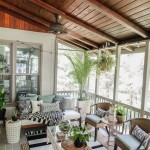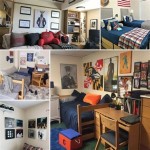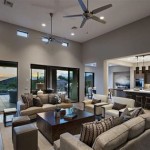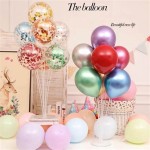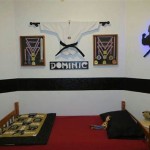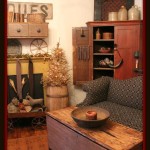How To Decorate Bedroom Walls: A Comprehensive Guide
Bedroom walls offer a significant opportunity to personalize a living space and express individual style. The decor chosen can profoundly influence the room's atmosphere, impacting mood and overall comfort. Effective wall decoration extends beyond simply filling the space; it involves thoughtful consideration of color palettes, textures, visual balance, and the room's existing features.
Before embarking on a wall decoration project, it's crucial to assess the room's dimensions, natural lighting, and existing furniture. A small room might benefit from lighter colors and minimalist designs to create an illusion of spaciousness, while a larger room can accommodate bolder choices and more elaborate arrangements. Similarly, a room with ample natural light can handle darker shades, whereas a dimly lit space might require brighter, more reflective hues to maximize illumination. The style and color of existing furniture should also inform wall decor decisions to maintain a cohesive and harmonious aesthetic.
Selecting the Right Paint Color
The foundation of any wall decor scheme is the paint color. Color choices significantly impact the room's perceived size, mood, and overall ambiance. Light colors, like whites, creams, and pale blues, tend to make a room feel larger and more open. They reflect light effectively and create a sense of airiness. Conversely, darker colors, such as deep grays, blues, or greens, can add depth and drama, creating a cozy and intimate atmosphere. However, they can also make a room feel smaller, so careful consideration is needed, especially in smaller bedrooms.
Beyond light and dark, the undertones of a color are also important. Warm colors, like reds, oranges, and yellows, evoke feelings of energy and excitement. Cool colors, like blues, greens, and purples, promote relaxation and tranquility. Neutral colors, such as grays, beiges, and whites, provide a versatile backdrop that can be easily complemented with pops of color through accessories and artwork. Before committing to a specific paint color, it's advisable to test it in different areas of the room and under various lighting conditions to ensure it achieves the desired effect.
Consider the function of the bedroom when selecting a paint color. For a master bedroom, a calming and relaxing palette is often preferable. For a child's bedroom, brighter and more playful colors might be more appropriate. Ultimately, the best paint color is one that resonates with the individual's personal taste and creates a comfortable and inviting environment.
Incorporating Art and Photography
Artwork and photography provide a personal touch and can significantly enhance the visual appeal of bedroom walls. The selection of pieces should reflect individual interests, passions, and aesthetic preferences. Consider the size and scale of the room when choosing the size and number of art pieces. A large, statement piece can serve as a focal point in a larger room, while a collection of smaller pieces can create an interesting gallery wall in a smaller space.
When arranging artwork, consider the principles of visual balance and symmetry. A symmetrical arrangement, with identical pieces on either side of a central point, can create a sense of formality and order. An asymmetrical arrangement, with pieces of different sizes and shapes arranged in a visually balanced way, can create a more dynamic and informal look. The height at which artwork is hung is also important. A general rule of thumb is to hang artwork at eye level, typically around 57 to 60 inches from the floor to the center of the piece.
The frames surrounding artwork can also contribute to the overall aesthetic. Matching frames can create a cohesive and unified look, while contrasting frames can add visual interest and personality. Consider the style of the artwork and the overall decor of the room when selecting frames. For example, ornate frames might be suitable for traditional artwork, while minimalist frames might be better suited for contemporary art.
Beyond traditional paintings and photographs, consider incorporating other types of wall art, such as tapestries, textiles, or sculptural pieces. These can add texture, depth, and visual interest to the walls and create a more unique and personalized space.
Utilizing Wallpapers and Textural Elements
Wallpaper presents an alternative to paint and can introduce patterns, textures, and colors that are difficult to achieve with paint alone. Wallpaper comes in a wide variety of styles, from traditional floral patterns to modern geometric designs. The choice of wallpaper should complement the room's existing decor and reflect personal style. A patterned wallpaper can add visual interest to a plain room, while a textured wallpaper can add depth and dimension.
When selecting wallpaper, consider the size and scale of the room. A large, bold pattern might be overwhelming in a small room, while a smaller, more delicate pattern might be lost in a larger room. Also, consider the color of the wallpaper and its impact on the room's overall ambiance. Light-colored wallpapers can make a room feel larger and brighter, while dark-colored wallpapers can create a cozy and intimate atmosphere. The installation of wallpaper can be challenging, so it's often best to hire a professional installer to ensure a smooth and flawless finish.
Beyond wallpaper, consider incorporating other textural elements into the wall decor. This can include adding wooden paneling, brick accents, or fabric wall hangings. These elements can add depth, warmth, and visual interest to the walls and create a more tactile and engaging space. Wood paneling can create a rustic and natural look, while brick accents can add an industrial and edgy feel. Fabric wall hangings can add softness and texture and can be easily changed to update the room's decor.
Textural elements can be strategically placed to highlight specific areas of the room or to create a focal point. For example, a textured accent wall behind the bed can add visual interest and create a sense of drama. Or, wooden paneling can be used to frame a window or doorway, drawing attention to these architectural features.
Creative Storage Solutions and Shelving
Wall-mounted shelves offer both decorative and functional benefits, providing storage space while also serving as a display area for decorative items. Shelves can be used to showcase books, plants, photographs, and other personal belongings, adding personality and character to the room. The style and material of the shelves should complement the room's existing decor. Wooden shelves can create a warm and rustic look, while metal shelves can add an industrial and modern feel. Floating shelves can create a minimalist and streamlined look, while traditional shelves with brackets can add a more classic and traditional touch.
When arranging items on shelves, consider the principles of visual balance and symmetry. A balanced arrangement, with items of similar size and shape arranged in a symmetrical way, can create a sense of order and harmony. An asymmetrical arrangement, with items of different sizes and shapes arranged in a visually balanced way, can create a more dynamic and informal look. Varying the height and depth of the items on the shelves can also add visual interest and prevent the arrangement from looking too static.
In addition to traditional shelves, consider incorporating other creative storage solutions into the wall decor. This can include using wall-mounted baskets, hooks, or pegboards to store and display items. These solutions can be particularly useful in small bedrooms where space is limited. Wall-mounted baskets can be used to store blankets, pillows, or magazines, while hooks can be used to hang coats, hats, or jewelry. Pegboards can be used to organize tools, craft supplies, or office supplies.
By incorporating creative storage solutions into the wall decor, it's possible to maximize space while also adding visual interest and personality to the room. These solutions can help to keep the room organized and clutter-free, creating a more relaxing and inviting environment.
Mirrors for Light and Space
Mirrors are a versatile decorating tool that can enhance the appearance of a bedroom by reflecting light and creating an illusion of spaciousness. A strategically placed mirror can visually double the size of a room and make it feel brighter and more open. Mirrors can also be used to highlight specific features of the room or to add a touch of elegance and sophistication.
When choosing a mirror, consider its size, shape, and style. A large, full-length mirror can be a striking focal point in a bedroom, while a smaller, decorative mirror can add a subtle touch of elegance. The shape of the mirror can also influence its impact. A round mirror can create a soft and inviting feel, while a rectangular mirror can create a more formal and structured look. The style of the mirror should complement the room's existing decor. Ornate mirrors can add a touch of glamour and luxury, while minimalist mirrors can create a more modern and understated feel.
The placement of a mirror is crucial for maximizing its impact. A mirror placed opposite a window can reflect natural light into the room, making it feel brighter and more open. A mirror placed near a light source can amplify the light and create a more dramatic effect. A mirror placed on a narrow wall can visually widen the space, making it feel less cramped. When hanging a mirror, ensure it is securely mounted and at a comfortable viewing height.
Mirrors can also be incorporated into other wall decor elements, such as gallery walls or shelving units. A mirrored tile wall can add a touch of glamour and sophistication to a bedroom, while a mirror placed behind a shelf can create an interesting visual effect. By incorporating mirrors into the wall decor, it's possible to enhance the room's aesthetics and create a more inviting and spacious environment.

30 Stylish Bedroom Wall Decor Ideas And Tips

25 Creative Bedroom Wall Decor Ideas How To Decorate Master Walls

20 Bedroom Wall Decor Ideas To Spruce Up Your Space Displate Blog

20 Bedroom Wall Decor Ideas To Spruce Up Your Space Displate Blog

10 Bedroom Wall Decor Ideas For Your Home Designcafe

20 Bedroom Wall Decor Ideas To Spruce Up Your Space Displate Blog

20 Bedroom Wall Decor Ideas To Spruce Up Your Space Displate Blog

How To Decorate Your Bedroom Walls Ekbb

30 Designer Loved Bedroom Wall Decor Ideas Havenly Blog Interior Design

30 Stylish Bedroom Wall Decor Ideas And Tips
